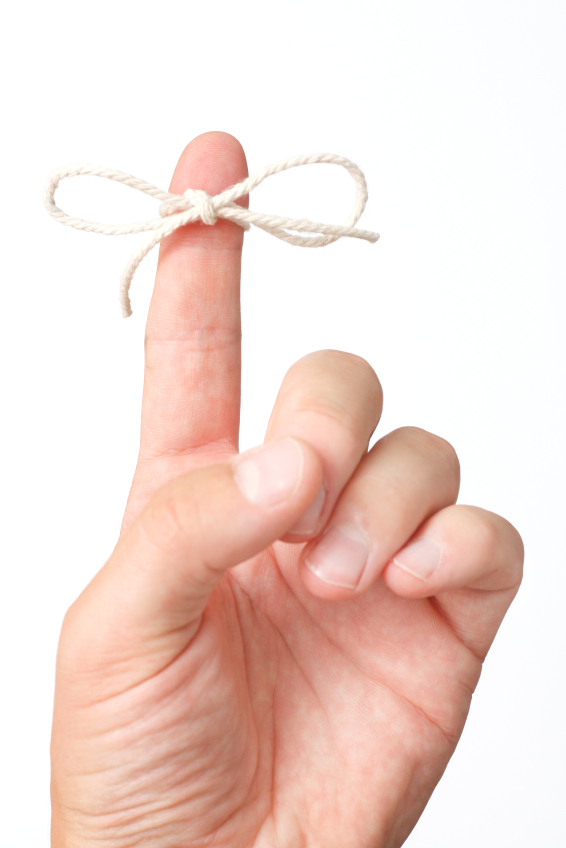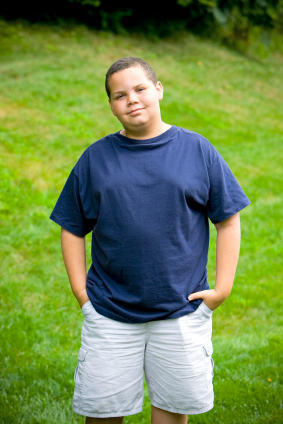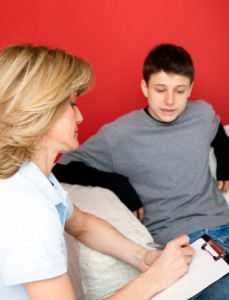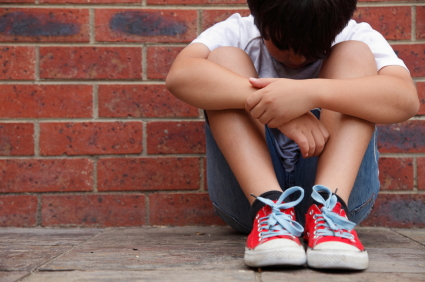Memory Tips for Bipolar Disorder
 Like cancer patients undergoing chemotherapy, patients with bipolar disorder often have memory problems, particularly if they have had many prior episodes. Some memory tips from CancerCare’s Chemobrain Information Series may also help patients with bipolar disorder remember things better and keep their memory sharp. Here are some of their tips:
Like cancer patients undergoing chemotherapy, patients with bipolar disorder often have memory problems, particularly if they have had many prior episodes. Some memory tips from CancerCare’s Chemobrain Information Series may also help patients with bipolar disorder remember things better and keep their memory sharp. Here are some of their tips:
Make lists. Carry a notepad with you, or use a smartphone to keep track of errands, shopping lists, daily tasks, and when you should take your medications.
Use a paper or electronic day planner or a personal organizer to keep track of appointments and special days like birthdays or anniversaries.
Use a wall calendar and hang it in a place that you will see it multiple times per day.
Carry a notebook and record everything you need to remember, including to-do lists; the dates, times, and addresses of appointments; important telephone numbers; and the names of people you meet and a brief description of them. You can also use the notebook to keep track of medical information: your medication schedule, any symptoms or side effects you are having, or questions to ask your doctor. You can also do this using an app like What’s My M3 or by downloading a personal mood charting calendar from our website.
Leave yourself a voicemail message to remember something important. When you listen to it later, write down the information.
Organize your home or office. Keep things in familiar places so you always know where to find them.
Avoid distractions. Find a quiet, uncluttered place to work or think where you can focus your attention for longer.
Have conversations in quiet places. This will help you concentrate better on what the other person is saying.
Repeat information aloud, and write down important points. If someone gives you information about an appointment, you might repeat the time, date, and location of the appointment out loud while righting it down.
Keep your mind active. You can use crossword puzzles, word or math games, or attend events about topics that interest you.
When writing, proofread. Double-check whether you’ve used the correct words and spellings.
Train yourself to focus through mindfulness. For example, if you keep misplacing your keys, pay extra attention each time you set down your keys. You may say aloud, “I’m putting my keys down on the counter.” Hearing the auditory cue can boost your memory.
Exercise, eat well, and get plenty of rest and sleep. These habits will help your memory work best.
Tell your loved ones that you are having memory problems, so that they’ll understand that you may forget things you may normally be able to remember. They can help you or encourage you.
Long Delays to First Treatment Are Crippling Many with Bipolar Disorder: What You Can Do
An article published by N. Drancourt et al. in the journal Acta Psychiatra Scandinavica this year examined the duration of the period between a first mood episode and treatment with a mood stabilizer among 501 patients with bipolar disorder. The time between a first episode of depression, mania, or hypomania and first treatment averaged 9.7 years. The authors conclude that more screening, better recognition of the early stages of the illness, and greater awareness are needed to decrease this long delay.
Editor’s Note: The article by Dancourt et al. replicates earlier findings of an average treatment delay of 10 years among bipolar patients from the treatment network in which this editor (Robert Post) is an investigator (formerly the Stanley Foundation Bipolar Network, now called the Bipolar Collaborative Network). The duration of the untreated interval (DUP) for patients with bipolar disorder is unacceptably long and carries a heavy price.
Those with the earliest age of onset experience the longest delay to first treatment. Early onset is associated with poor outcome compared to adult onset bipolar disorder, and the duration of time untreated adds a separate, independent risk of a worse outcome in adulthood, especially more frequent and severe depression, more episodes, and less time well.
What patients and doctors can do to shorten this interval to first treatment: Know the risk factors for early onset bipolar disorder so you can seek evaluation and advise treatment as appropriate. Read more
Psychotherapy of Childhood Bipolar Disorder
At the 2014 meeting of the American Academy of Child and Adolescent Psychiatry, there was an excellent symposium on different psychotherapeutic approaches for children and adolescents with bipolar disorder and related illnesses.
Amy West of the university of Illinois at Chicago started off this symposium by describing the effectiveness of child-and family-focused cognitive-behavior therapy or what is sometimes called RAINBOW therapy. Rainbow stands for Routine, Affect regulation, I can do it, No negative thinking, Be a good friend and balance life stressors, Oh how can we solve problems, and Ways to find support.
West emphasized the importance of routine in sleep, diet, medications, and homework, and indicated that frequent soothing is necessary. Posted reminders are also helpful.
Affect regulation can be encouraged by promoting coping skills, particularly around identifying what triggers mood swings and rage attacks and creating plans for dealing with them.
“I can do it” reminds parents and children to focus on strengths, successes, positive feedback, and the ability to call for help.
“No negative thinking” encourages positive restructuring and reframing of negative perspectives. Part of this includes mindfulness training for children and parents, who are taught to focus on breathing and accepting thoughts and emotions.
Being a good friend focuses on listening, engaging friends, and enhancing communication.
“Oh how can we solve problems” reminds families to have an attitude of problem solving.
Remembering ways to find support reminds parents to connect with relevant resources, and also coaches parents to be advocates for their children.
In a randomized study of 12 sessions of child and family focused cognitive behavior therapy, the children did much better than those receiving treatment as usual and showed greater improvement in mania and depression as well as overall functioning.
The second presentation was given by Mary Fristad of Ohio State University. She treated children with bipolar disorder not otherwise specified (BP-NOS) with psychotherapy and omega-3 fatty acids. Some research had suggested the efficacy of omega-3 fatty acids in childhood mood disorders and a much larger literature was positive in adult mood disorders. Given the safety of the manipulation, she felt it was worth trying in young children and those with BP-NOS who are rarely studied formally. She also cited a 2010 study by Amminger et al. in children who were at ultra high risk for schizophrenia. In that study, patients were randomized to 12 weeks of omega-3 fatty acids or placebo, and omega-3 fatty acids were associated with a very low conversion rate to full-blown psychosis, 4.9%, compared to 27.5% for those receiving placebo. Fristad’s psychotherapy also emphasized education, support, and skill building in order to enhance understanding of the illness and its treatment. This would help ensure better compliance and better treatment outcome. Her formal treatment manual is available at www.moodychildtherapy.com.
Fristad randomized children with bipolar not otherwise specified, average age 10.2 +/- 0.2 years to either her psychotherapy plus omega-3 fatty acids or therapy plus placebo. Therapy plus omega-3 was much more effective on most outcome measures.
Editor’s Note: Given the safety of omega-3 fatty acids, even these limited data would appear to justify their use in children with BP-NOS in the context of psychotherapy and psychoeducation.
The third presenter was David Miklowitz of UCLA who discussed family focused therapy. This approach has proven effective in studies of both adults and adolescents with bipolar disorder, and as well for those with prodromal symptoms. Read more
Finding Treatments That Work For Each Patient
At a recent scientific meeting, researcher Andrew H. Miller presented data on infliximab, an inhibitor of the inflammatory cytokine TNF alpha that is used to treat rheumatoid arthritis and is being explored for the treatment of depression. As previously reported in BNN Volume 16, Issue 2 from 2012, the drug was not effective overall among the depressed patients, but in a subgroup of patients with high levels of the inflammatory marker CRP, infliximab was highly effective. Miller emphasized that patients do not fail to respond to treatments; it is doctors who fail, or drugs that fail. He explained that there is tremendous heterogeneity in people’s illnesses, and doctors must get better at sorting out what treatments will work for each patient, striving toward personalized therapeutics.
There are many clinical correlates or predictors of nonresponse to antidepressants used in unipolar depression. These include inflammation, obesity, stress in childhood, anxiety disorder comorbidity, substance abuse comorbidity, and medical comorbidity.
Editor’s Note: How do we doctors target these clinical correlates of illness for better therapeutic effects? We are just starting to learn, and until we identify good markers for predicting illness, the best we can do is carry out carefully sequenced clinical trials of medications and therapies with different mechanisms of action.
Patients can assist their physicians and clinicians by engaging in precise, preferably nightly charting of their mood, functioning, medications, life events, side effects, and other symptoms such as anxiety on a personal calendar. Several of these are available for free download, and there are other longitudinal screening instruments, such as the website and app What’s My M3.
A good personal response to a novel treatment or a poor response to an Federal Drug Administration–approved treatment trumps anything that is written in the research literature. The best way to achieve the best outcome is to engage in excellent monitoring of symptoms and side effects that can guide the next steps in therapeutics.
Comments on Treatment Conundrums
Clinical medicine is an art and as medical pioneer Sir William Osler declared, often involves “skillful use of combinations.” As the risks of inadequately treated illness increase, use of drugs with inadequately delineated benefit-to-risk ratios may be increasingly justified, such as in the case of memantine as recommended by Koukopoulos.
One should start early, effective, preventive pharmacological treatment of the recurrent unipolar and bipolar disorders. When this is not accomplished, an increasing number of unknowns enter the treatment equation, and as these illnesses enter more serious stages of recurrence, progression, and treatment resistance, the path to remission and wellness becomes increasingly complicated and relies on skillful management, guesswork, and good data from patients.
Given the multiple unknowns, patients can play an important role. They can be intimately involved in the decision-making, and provide precise feedback in the formal or informal longitudinal monitoring of mood, sleep, other symptoms, and side effects so that whatever is tried can be accurately assessed. A treatment with known efficacy is only worthwhile if it is effective in a given patient. When evidence of efficacy in the literature is more questionable, the evidence of effectiveness of a given treatment regimen in a given individual becomes all the more important to discern. We recommend that patients chart their mood and medications using the National Institute of Mental Health’s Life Charting Method (NIMH-LCM) or another type of personal calendar (we offer several on our Lifecharting page–see the gray horizontal menu above this article). This type of careful longitudinal monitoring method can help in the quest for an optimal treatment result.
Our old recommendation would appear particularly appropriate for this discussion. When things are going well (in the treatment of recurrent mood disorders), be conservative and stay the course. Conversely, when mood is not stabilized, be more radical and continue to explore new options until stability is achieved.
Obesity and Bipolar Disorder: News from the American Academy of Child and Adolescent Psychiatry
 At the annual meeting of the American Academy of Child and Adolescent Psychiatry in Toronto in October 2011, a symposium on the impact of obesity on the course of childhood onset bipolar illness was held.
At the annual meeting of the American Academy of Child and Adolescent Psychiatry in Toronto in October 2011, a symposium on the impact of obesity on the course of childhood onset bipolar illness was held.
Typical Treatment of Bipolar Disorder in Youth
David Axelson described the typical outcome of bipolar illness and the medications used during naturalistic treatment. The data came from the large collaborative Course and Outcome of Bipolar Illness among Youth (COBY) study, in which he and his colleagues followed 255 patients with bipolar I disorder (BP I), 30 patients with bipolar II (BP II), and 153 patients with bipolar not otherwise specified (BP NOS) for a mean of 5 years. He discussed only BP I children at the symposium.
The study initially followed 270 BP I children for a mean of 582 weeks. They ranged in age from 7 to 17 years (average 14.4 years). Ninety-three percent of the children were treated with one or more antimanic (AM) agents. These included atypical antipsychotics (AA) in 77%, valproate or carbamazepine in 44%, and lithium in 47%. Antidepressants (ADs) were used in 46% of the children, stimulants in 43%, and benzodiazepines in 21%. Sixty percent had been on two classes of antimanic medications concurrently at some point.
A univariate analysis showed that older children received smaller amounts of antipsychotics and more anticonvulsants and lithium. Variables associated with better response, that is, a rating of either much or very much improved on the Clinical Global Impressions scale for bipolar disorder (CGI-BP), included older age and treatment with atypical antipsychotics. Those who had comorbid attention deficit hyperactivity disorder (ADHD) or psychosis at baseline did more poorly. Mean symptom scores were better when the children received any anti-manic treatment including an atypical or lithium, but worse when they received valproate or carbamazepine.
These data are similar to those from other prospective treatment outcome studies in childhood-onset bipolar I illness. Taken together they all suggest that the illness is difficult to treat and stabilize even when multiple medicines are used in combination.
Obesity and Mood Disorders in Youth
Another speaker, Ben Goldstein, indicated that in the scientific literature, obesity has been associated with a higher number of depressive episodes and longer length of depression, more recurrences of depression, more anxiety disorders, increased numbers of hospitalization, more suicide attempts, and worse functional outcomes. In the same group of patients discussed by Axelson above, 42% were overweight or obese, compared to a 34% incidence in the general population of children in this age range.
Factors associated with overweight included substance abuse, a history of physical abuse, prior hospitalization, and being on 2 or more medications. Those who were overweight or obese spent more time ill in a manic or depressive episode. Read more
Risks and Difficulties of Treating Childhood-Onset Bipolar Disorder
 Early treatment is needed in childhood onset bipolar disorder
Early treatment is needed in childhood onset bipolar disorder
Multiple factors make childhood-onset bipolar disorder a difficult problem for affected children and families. Early onset is common, and treatment is often delayed or inappropriate. It takes an average of nine months to achieve remission, and relapses are common. In studies children have remained symptomatic for an average of two-thirds of the time they receive naturalistic follow up treatment, and the illness impairs social and educational development. Episodes and stressors tend to accumulate, and substance abuse is a frequent complication. Dysfunction and disability occur at a high rate among children with the illness, and suicidal ideation and acts are common.
When we surveyed adults in our treatment network, the Bipolar Collaborative Network (BCN), about the history of their illness, we found that the duration of the time lag between illness onset and first treatment was independently related to a poor outcome in adulthood. A longer delay to first treatment was associated in adulthood with greater depression severity, more days depressed, fewer days euthymic, more episodes, and more ultradian cycling (or cycling within a single day). Because treatment delay is a risk factor that can be avoided or prevented, efforts should be made to initiate treatment early in the course of bipolar illness. Read more
The N-acetylcysteine Story: A New Potential Therapy for Bipolar Illness and Substance Abuse
N-acetylcysteine (NAC), a readily available substance from health food stores, is able to reestablish glutamate homeostasis (regulation and balance) in the reward area of brain (the nucleus accumbens), reported Peter Kalivas of the University of South Carolina at the “Staging neuropsychiatric disorders: Implications for idiopathogenesis and treatment” meeting in Mojacar, Spain this past November. Kalivas reported that NAC appears to be effective across a spectrum of addictions, including cocaine, heroin, alcohol, cigarette smoking, and gambling.
Even more remarkably, NAC also appears to have positive effects in placebo-controlled studies in the treatment of patients with bipolar illness, report Mike Berk and colleagues, who are studying the same substance in Australia. Compared with placebo, patients taking adjunctive NAC showed improvement in all outcome measures, especially depression, after 3 and 6 months. In another article, also published in Biological Psychiatry in 2008, Berk’s research group demonstrated that NAC improved some negative symptoms of schizophrenia. NAC has also shown positive effects in trichotillomania and on nail-biting, suggesting that it has a variety of potential clinical uses in conditions associated with pathological compulsive behavioral patterns.






